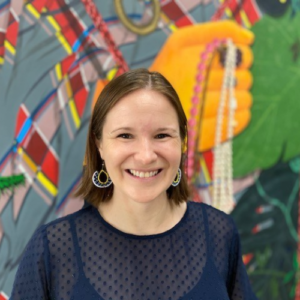Just weeks after Sama Alshaibi was formally inducted as a Regents Professor, a mid-career solo exhibition of the Iraqi-born artist began in the United Arab Emirates.
The Arizona Board of Regents honored the School of Art professor during the University of Arizona’s Outstanding Faculty Awards Ceremony on Feb. 15 at Crowder Hall.

In large part to Alshaibi’s contributions, the school’s Photography, Video and Imaging program has grown substantially and is ranked No. 3 in the U.S. News & World Report’s list of best photography schools.
“We are in awe of your impact,” said John Milbauer, associate dean for Faculty Affairs for the College of Fine Arts, who introduced Alshaibi at the ceremony.
“Tell it to the River,” a mid-career survey of Alshaibi’s work, started Feb. 27 at the Maraya Art Centre in Sharjah, UAE. The solo exhibition, which runs through June 30, 2023, brings together significant parts of her practice over the last two decades.
The exhibition debuts two commissions, one of them inaugurating Alshaibi’s 2021 Guggenheim Fellowship and the other marking the closing chapter of an eight-year long photographic series. The two new projects mark the return of Alshaibi to her homeland of southern Iraq following a 40-year displacement.
Alshaibi’s work “explores the notion of aftermath — the fragmentation and dispossession that violates the individual and a community following the destruction of their social, natural and built environments,” Milbauer told the audience on Feb. 15.
In her photographs and videos, Alshaibi often uses her own body as both subject and medium.

“Your work is exemplary, as your professional accolades demonstrate: an extensive list of fellowships, exhibitions, publications and awards on both national and international levels,” Milbauer said.
Among those accolades, in addition to the Guggenheim Fellowship, are an exhibition at the 2014 Venice Biennale, a monograph published by Aperture (“Sand Rushes In”), a 2014 Fulbright research fellowship to the West Bank city of Ramallah and a 2019 Artpace International Artist Residency in San Antonio.
Regent Larry Edward Penley formally inducted Alshaibi as a Regents Professor on Feb. 15.
Earlier Provost Liesel Folks, senior vice president for Academic Affairs, told the audience that the Regents Professor is “the highest honor the university system can bestow on a faculty member.” The honor is “reserved for faculty scholars with exceptional ability who have achieved national and international distinction while maintaining a robust portfolio of student-facing work,” Folks said.
Alshaibi joined the School of Art in 2006. In her field, she is among the most sought-after presenters, having given nearly 100 presentations, and among the most frequently cited visual artists, with more than 200 citations. Her work has also been featured in recent exhibitions such as “Women in the Face of History and Migration(s)” and “Meaning in Art.”
Four other University of Arizona faculty members were formally named 2022 Regents Professors: Jean-Luc Brédas (Chemistry and Biochemistry), Juanita L. Merchant (Gastroenterology and Hepatology), David Pietz (History) and Donata Vercelli (Cellular and Molecular Medicine).










